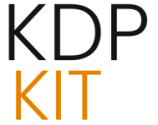
Full-Service and Specialized Support Ecosystems
Not every author wants to be a business manager, and not every book requires a purely automated, hands-off distribution route. Sometimes, the complexity of production—editing, design, print logistics—is the biggest barrier to launch. This is where full-service companies and tech giants with direct portals offer compelling alternatives.
BookBaby: The Comprehensive Service Suite for Hands-Off Authorship
BookBaby positions itself not merely as a distribution channel but as a full-service self-publishing company designed for authors who desire significant hands-on assistance throughout the entire production and distribution lifecycle. This option is suitable for creators who may lack the time, expertise, or inclination to manage the technical aspects of file conversion, professional editing, cover design, or complex print logistics themselves. BookBaby offers a tiered selection of paid services that allow authors to outsource these critical creative and administrative tasks. The Express package, for instance, includes distribution and 25 print books for a substantial upfront fee, while their *Complete* package adds formatting and design services.
Once the book is polished and manufactured, the platform acts as an aggregator, capable of distributing both print and digital versions to a wide array of retailers. A notable feature is its competitive royalty structure for its own channels: if you sell through the BookBaby Bookshop, you keep a best-in-industry 85% of the retail price for e-books, and 50% for print. For distribution to external partners like Apple or Kobo, the royalty splits are the retailer’s standard rate, meaning the upfront service fee is the price paid for professional production and simplified fulfillment. This hybrid approach to sales management appeals to the author prioritizing a professionally finished product and needing experts to handle the pipeline from manuscript to market.
Google Play Books: Accessing a Massive Global Digital Audience via a Tech Giant
As another major technology company offering a dedicated publishing portal, Google Play Books provides self-published authors with direct access to the vast universe of Android users and the Google Play digital storefront. Publishing here is straightforward, often requiring only a standard Google account to initiate the setup process, which includes linking bank and tax information necessary for royalty processing. Authors have the choice to utilize a free ISBN provided by Google, which confines the book to that platform, or to supply their own unique International Standard Book Number, which is the recommended path for any author pursuing wide distribution via aggregators or other retailers.
The platform supports the listing of e-books, audiobooks, and even visual media like comics and manga, boasting features like ‘Bubble Zoom’ for graphic novels and integration with the Android Auto system for listening on the go. For the author focused purely on digital reach among the massive global population utilizing Google services, this platform is an essential component of a complete digital deployment strategy, offering a significant segment of the global e-reading market. Crucially for the wide distribution goal, Google Play Books does not enforce exclusivity, meaning you can list the same title here and everywhere else simultaneously.. Find out more about Best aggregators for maximizing wide eBook reach.
Deep Dive into Platform Mechanics and Author Benefits
Understanding the differences between platforms isn’t just about checking boxes; it’s about understanding the financial and logistical implications for your long-term career. The choices you make now—how you print, what you agree to—determine your net profit and control for years to come.
Understanding the Nuances of Print-on-Demand and Wholesale Distribution
The function of print-on-demand (POD) technology, as expertly utilized by platforms like IngramSpark, represents a fundamental shift from traditional publishing overhead. This process means a physical book is not created until a specific customer or retailer places an order for a single copy. The benefit to the author is zero inventory risk and an immediate path to wholesale terms, which are necessary for bookstore stockists.
Conversely, authors must understand that while wholesale access is granted, it does not guarantee placement; it only guarantees the ability for a store to easily order the title. IngramSpark, the key player here, enables access to a global network of over 45,000 retailers, libraries, and educators. This mechanism contrasts sharply with services like Lulu, which also offer print-on-demand but may place a greater emphasis on direct sales fulfillment capabilities or different API integration methods for bespoke store setups. A key point for IngramSpark distribution in 2025: books enabled for this trade distribution incur a 1.5% market access fee on top of the print cost deductions. Analyzing the fee structures—whether a per-title charge (though IngramSpark has dropped setup fees) or a royalty cut—is paramount when selecting a print partner, as this heavily influences the net profit on physical sales. For physical visibility, IngramSpark is the engine; for digital volume, you look elsewhere, or perhaps use a hybrid approach where D2D handles the digital feed and IngramSpark handles the print feed to trade channels.
Royalty Structures and Exclusivity Agreements: A Comparative Analysis
A critical element differentiating these alternatives is the structure of author compensation and any accompanying contractual obligations. While some platforms, like Kobo Writing Life for certain tiers, aim to match the highly competitive royalty percentages offered by the dominant platform, others, such as BookBaby for e-books, advertise potentially even higher take-home rates for specific sales channels. Kobo Writing Life, for example, pays up to 70% on e-books priced between $2.99 and $9.99, with no file delivery fees—a huge advantage for image-heavy books.. Find out more about Draft2Digital seamless consolidated eBook reach guide.
The most significant contractual divergence centers on exclusivity. The dominant platform often utilizes an optional enrollment program that requires an author to grant exclusive digital rights for a set period—typically ninety days—in exchange for access to special promotional tools or inclusion in lending libraries. Conversely, nearly all the alternatives discussed—including Apple Books, Kobo, and Draft2Digital—explicitly state they do not impose these exclusivity requirements, empowering authors to maintain complete freedom to distribute their e-book across every available channel simultaneously. This freedom is a major driver for authors opting to utilize an aggregator like Draft2Digital, as it allows them to feed the same, non-exclusive file to multiple retailers simultaneously, something a direct-only account structure can complicate. Retaining your rights is trading a potential, minor boost in sales visibility on one platform for the certainty of reach everywhere else.
The Role of Aggregators Versus Direct Retailer Accounts
Distinguishing between a direct retailer account and an aggregator service is vital for a successful distribution plan. A direct retailer account, such as opening a profile with Apple Books or Barnes & Noble Press, gives the author maximum control over pricing, metadata, and direct communication with that specific storefront, but it necessitates the author managing each account separately. An aggregator, such as Draft2Digital or PublishDrive, acts as a middle layer, taking the author’s single file and managing the technical distribution and payment reconciliation across numerous downstream retailers, including those direct retailers.
While this introduces a small layer of royalty reduction (the aggregator’s cut, often 10% of the final retailer payout for D2D), the massive savings in time, administrative complexity, and reduced risk of formatting errors across diverse platforms often make the aggregator the preferred choice for authors seeking truly wide eBook reach. Think of it this way: if you save 10 hours a month by using D2D instead of manually uploading to Apple, Kobo, Google, and 15 smaller vendors, is that 10% cut worth the regained writing or marketing time? For many, the answer is a resounding yes. Some advanced aggregators, like PublishDrive, add value by incorporating data analysis tools on top of this basic distribution function, blurring the line between aggregator and strategic partner.
Specialized Tools and Ecosystem Considerations
Your distribution choice should reflect where your readers live. Are they loyal iPhone users? Are they browsing library catalogs? Are they searching the open web for your niche topic? The ecosystem advantages of direct publishing can sometimes outweigh the convenience of an aggregator for specific markets.
Leveraging Ecosystem Advantages: The Apple and Google User Bases. Find out more about PublishDrive data-driven global sales management tips.
The decision to publish directly to platforms like Apple Books or Google Play Books often boils down to strategically targeting users who are deeply entrenched within those respective technology ecosystems. For instance, the loyalty among Apple users means that books discovered within the native Apple Books application are highly likely to be purchased and consumed there, bypassing other online venues entirely. Authors publishing directly here maintain complete, granular control over promotional tools specific to the Apple environment.
Similarly, Google Play Books captures a massive global audience tied to the Android operating system and Google search functionality. Publishing directly here ensures your title benefits from organic discoverability across the world’s largest search engine via Google Books previews—an SEO advantage that aggregators feed into, but one that direct listing optimizes for. Authors utilizing these platforms directly can sometimes benefit from platform-specific promotional features designed to boost visibility within that closed environment, something that an aggregator’s generalized distribution feed may not fully optimize for. This direct approach is about maximizing penetration within a known, captive audience segment. If you are worried about the aggregator taking their cut on your high-volume Apple or Google sales, opening a direct account is the precise countermeasure.
Full-Service Support: When Professional Assistance Becomes a Strategic Asset
For many authors, the true value proposition of a company like BookBaby lies in its willingness to act as a comprehensive production partner. In the competitive environment of two thousand twenty-five, professional editing, sophisticated cover design, and error-free e-book conversion are non-negotiable for quality perception. While many authors freelance these services, a full-service provider bundles these necessary, high-cost expenditures into one managed process.
This simplifies the author’s workflow to focus solely on writing and marketing strategy, delegating the technical creation and distribution pipeline to experts. This service model is particularly appealing to established professionals or those publishing complex, high-production-value books where technical mistakes could significantly damage perceived quality and market reception. The trade-off is clear: you pay an upfront fee (potentially several thousand dollars for full packages) to bypass the administrative burden of hiring and managing freelance editors, formatters, and designers independently. It’s a choice for authors who value managed workflow and bundled expertise over zero upfront cost.
Comparative Platform Strengths for Different Author Goals
Success in modern self-publishing is rarely about finding the single ‘best’ platform. It’s about assembling a strategy where each tool fills a necessary gap in your market coverage. We need to weigh print versus digital, and convenience versus margin.. Find out more about BookBaby comprehensive self-publishing service suite strategies.
Optimizing for Print Quality and Wholesale Access Versus Ebook Volume
A fundamental division exists between platforms optimized for print and those geared towards digital volume. IngramSpark is the undisputed leader for achieving bookstore and library distribution via high-quality print-on-demand, making it the go-to for authors whose primary goal is physical book visibility alongside digital sales. Its wholesale terms are what trade accounts require.
In contrast, platforms like Kobo Writing Life and the direct listings on Google Play Books are primarily focused on capturing the high-volume, high-velocity sales characteristic of the global e-book market. An author whose primary goal is maximizing digital unit sales and accessing a global e-reading base might favor a combination of direct retailer listings (Apple, Kobo) fed by an aggregator (Draft2Digital) for efficiency, reserving IngramSpark for the print edition distribution to trade channels. This hybrid model—using D2D for the digital feed everywhere else, and IS for print distribution—is a standard, high-coverage strategy for serious independent publishers today.
The Financial Calculus: Royalty Percentages Versus Service Fees
The financial decision requires careful modeling based on sales projections. Direct retailers often offer predictable, high royalty splits for e-books, such as the highly competitive seventy percent figure from Kobo and Apple Books at certain price points. Aggregators deduct a small percentage from that already agreed-upon retail rate for their services. Full-service providers like BookBaby require an initial outlay for services, after which the author receives a higher royalty percentage on direct sales but must factor in the upfront cost when calculating overall profitability.
Platforms like IngramSpark involve a nominal title setup fee (currently waived, but watch for changes) and the 1.5% market access fee for distributed print, but the subsequent print costs are deducted from the retail price, requiring authors to use their available calculators to accurately project net profit based on anticipated wholesale discounts. The calculus must always weigh the cost of saved time and outsourced expertise against the incremental loss of a few percentage points of royalty. Time is, after all, the one resource you can never print more of.
Strategic Implementation: Building a Multi-Platform Publishing Cadence. Find out more about Best aggregators for maximizing wide eBook reach overview.
Moving from theory to practice demands a focus on the technical cornerstones that allow platforms to communicate effectively: ISBNs and metadata. Get these wrong, and even the best distribution network falls apart.
The Necessity of Utilizing Your Own International Standard Book Number
A crucial technical element underpinning any successful multi-platform strategy involves the consistent use of a self-purchased, unique International Standard Book Number for each specific format of the book—one for the e-book, one for the paperback, and one for the hardcover, if applicable. When platforms like Google Play Books offer a complimentary ISBN, authors must recognize that accepting this effectively locks that specific edition of the book into that retailer’s system, preventing it from being distributed via an aggregator or another direct retailer using the same identifier.
This creates two separate, non-interchangeable products in the marketplace, splitting your sales rank and customer reviews—a death blow to discoverability. Therefore, for any author aiming for the wide distribution discussed across all these alternatives, securing and consistently applying your own set of proprietary ISBNs is a prerequisite for maintaining logistical control over your entire publishing portfolio. This small, upfront investment is the passport to true market freedom.
Harmonizing Metadata for Consistent Brand Visibility Across Channels
Even with the best distribution system, if the book’s metadata—the title, subtitle, description, genre tags, and author biography—is inconsistent across the nine separate retail and aggregator accounts, the author risks confusing both algorithms and potential readers. The process of uploading to these varied platforms requires a disciplined approach to metadata management. Inconsistent branding—a slightly different subtitle on Apple versus Kobo—can confuse readers who trust the platforms to present a unified product.
Platforms like PublishDrive are known for offering tools that assist in optimizing this descriptive data, but ultimately, the author must ensure that the core branding and search terms are identical or strategically tailored for the specific audience of each channel. Inconsistent metadata can lead to diminished search results on one platform while performing well on another, creating an uneven market presence that undermines the goal of broad, comprehensive visibility. Mastering your metadata optimization guide ensures that when a reader searches, they find your book, not a ghost copy.
Finalizing Your Authorial Distribution Strategy in Two Thousand Twenty-Five
We have surveyed the landscape: the pure aggregators like Draft2Digital, the analytical hub of PublishDrive, the hands-off production of BookBaby, the trade access of IngramSpark, and the ecosystem targets of Apple and Google. Now, it’s time to build the machine.
Synthesizing Platform Strengths for Maximum Market Capture
The modern independent author’s success is increasingly defined not by their choice of one perfect platform, but by their ability to architect a composite strategy that leverages the unique strengths of several of these KDP alternatives. A robust plan for two thousand twenty-five might look like this:
- Physical Trade Distribution: Utilize IngramSpark print-on-demand for all physical distribution to secure bookstore and library access, ensuring you offer the necessary wholesale discount terms.
- Primary Digital Feed: Simultaneously feed your non-exclusive e-book files via Draft2Digital to cover all major digital retailers outside of the primary ecosystem (e.g., smaller international stores, library aggregators).
- Ecosystem Deep Dive: Maintain direct accounts with Apple Books and Kobo Writing Life to fine-tune specific promotional efforts, monitor platform-specific performance data in real time, and capture the full 70% royalty rate without an aggregator cut on those primary channels.. Find out more about PublishDrive data-driven global sales management insights information.
- Data Leverage: Use PublishDrive if your budget allows, specifically to track the sales from all those secondary D2D channels in one place and apply data-driven pricing changes to your backlist.
This layered approach ensures coverage across the key areas: professional print distribution, wide digital reach, and specific ecosystem targeting. For deeper insight into this balanced approach, review our hybrid publishing model case studies.
The Enduring Value of Creative Control and Rights Retention
Underpinning the entire shift away from singular reliance is the fundamental desire to retain the entirety of creative and commercial rights. Each of these alternatives, whether a service provider, a direct retailer, or an aggregator, is structured to facilitate publishing for the author, not instead of the author. By diversifying distribution and managing the publishing process across multiple, non-exclusive partners, authors safeguard their intellectual property and ensure that no single entity has unilateral control over their book’s pricing, availability, or long-term market presence.
This ultimate control over one’s creative legacy, combined with the enhanced reach into global and trade markets, solidifies the viability of these platforms as essential components of a forward-thinking, sustainable self-publishing career in the current publishing climate. The era of being “all in” on one platform is over. The future belongs to the author who masters the art of the balanced, wide distribution network.
Now, the question for you: Which platform currently handles the bulk of your non-Amazon sales, and are you satisfied with the data transparency it offers? Let us know your strategy in the comments below!








